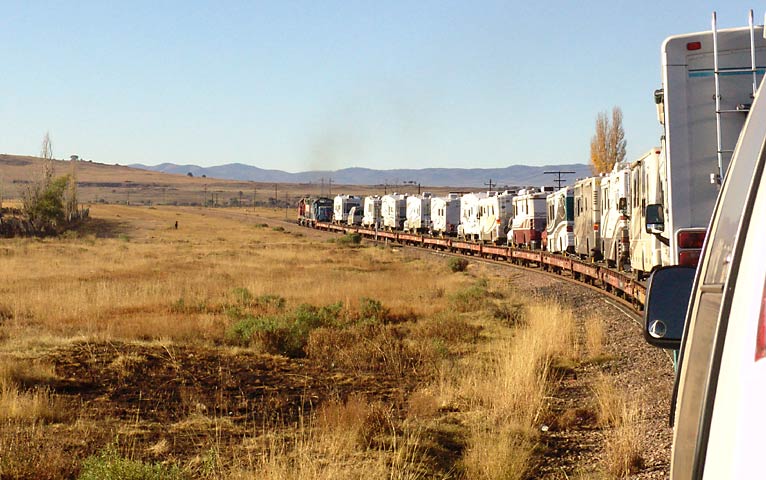
La Junta to Creel
Nov. 9, 2006

We departed La Junta and headed across the high plateau for the Copper Canyon
area. Riding in the RV on the train was a neat experience; I could sit in the
driver's seat, not have to pay any attention to staying on the road or finding
my way, and simply watch the scenery go by. Our guide provided information
about what we were seeing over the CB radio.
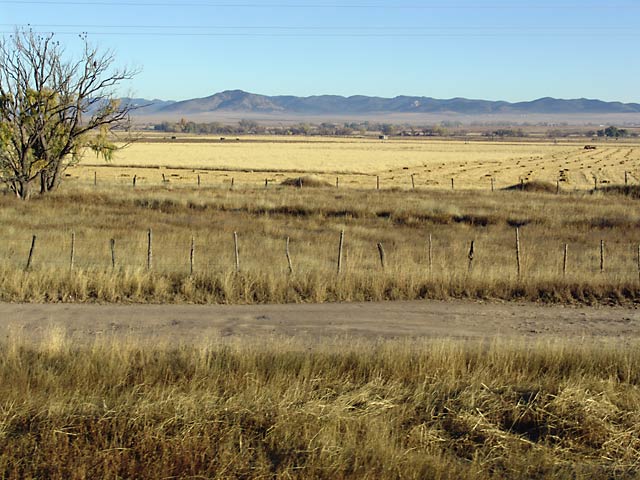
The landscape in this high plateau reminded me of parts of Montana -
ranching and farming, and arid mountains in the distance.
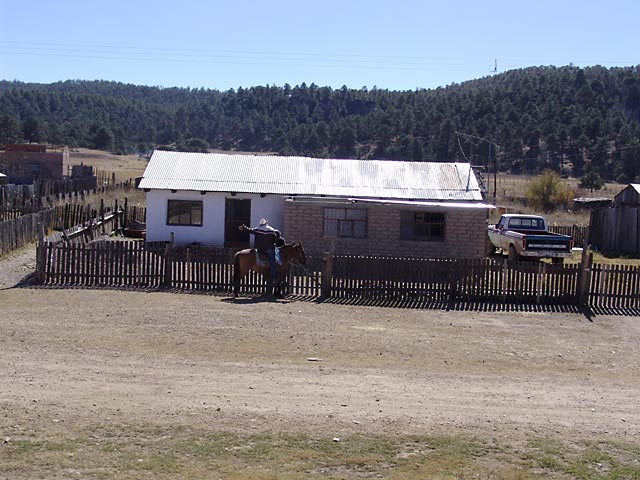
It seemed that pickup trucks and horses were the dominant means of
transportation in this area. As we got higher in altitude, trees (mostly pine
and oak) became more prevalent.
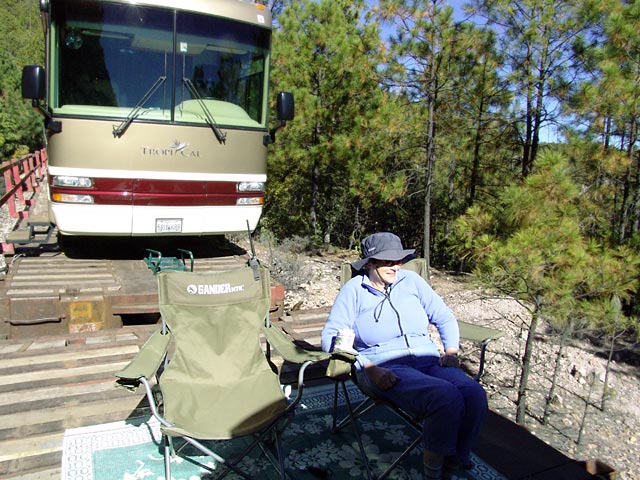
After the sun had warmed things up, sitting out on the deck of the railroad
car watching the scenery go by was also an enjoyable experience.
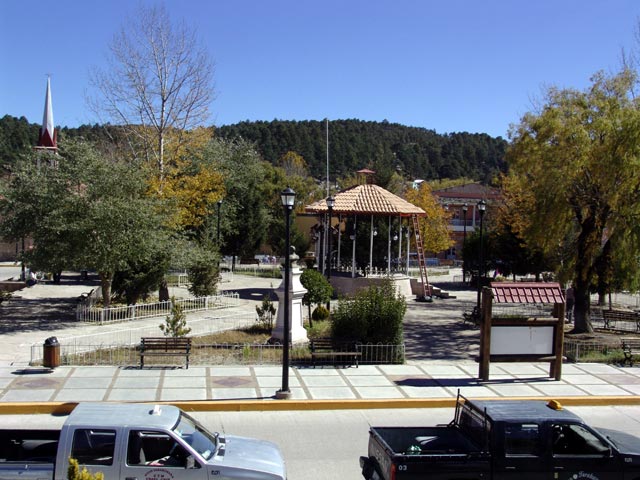
The town square in Creel.

The train attracted a lot of attention, especially from small
children; they had learned enough English to ask for candy. A few people
on the train would throw candy to children as we passed by. The problem with
that is (1) the children get too close to the train (the train company asked
that we not throw candy because of safety concerns for the children), and (2) it
promotes an undesirable attribute of our culture, namely begging.
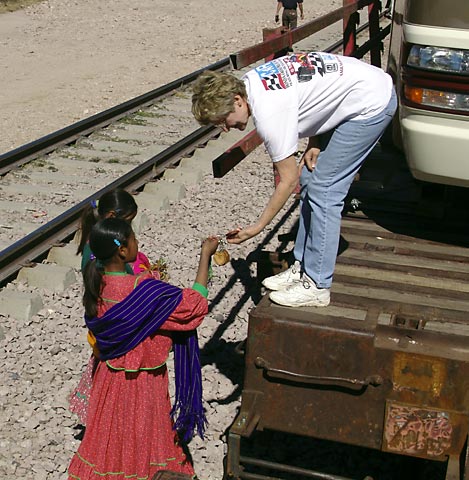
Other children would come and try to sell us things they, or
their parents, had made - baskets, beaded necklaces, hand made key fobs, etc.
Diane is looking at their offerings and decided to buy a couple of items. These
children are Tarahumara, one of the indigenous people in Mexico; they live
primarily in the Copper Canyon area. For many of them selling handmade arts and
crafts is their main source of income for the family and the children are
expected to help sell the items.
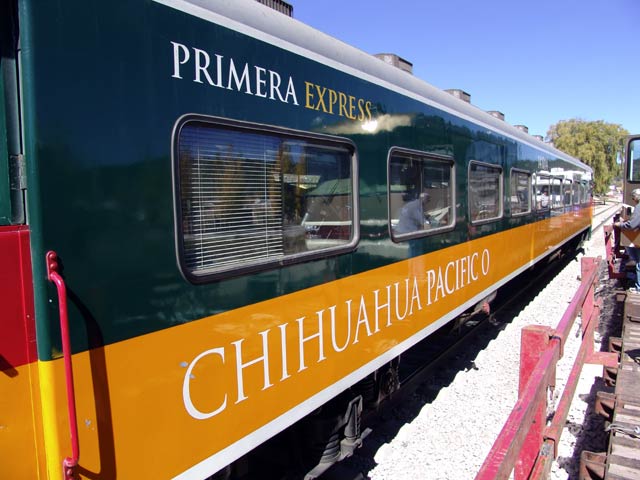
While stopped in Creel the first class passenger train,
nicknamed the "Chepe" came in and stopped as well. The passenger train
makes the trip through the Copper Canyon in about 12- 15 hours and travels at
about 45-50 miles per hour, while we will take 5 days and travel at about 15
miles per hour. This allows us to see much more, and enjoy it longer, than those
on the Chepe.

Sitting out on the deck of our railroad car, we seemed to be a
center of attention for the passengers on the Chepe. Perhaps they were jealous
of our superior view for sightseeing.
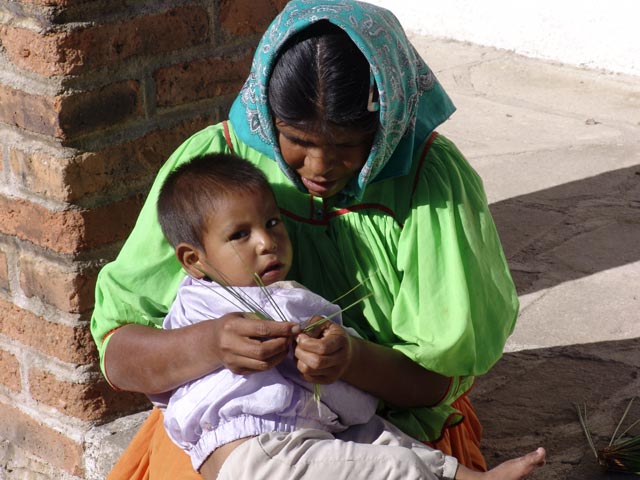
We stopped for the night in Creel and spent the afternoon
touring around by bus. The first stop was a lake nearby with Tarahumara women
with handmade items for sale. This woman is weaving a basket from pine needles
while cuddling her baby.
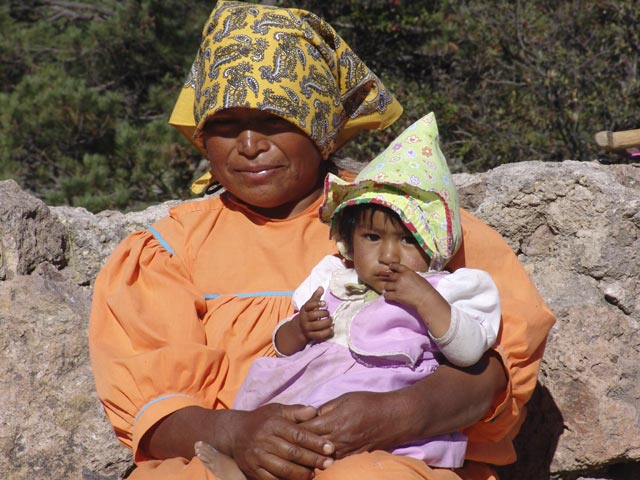
Another Tarahumara woman with her baby.
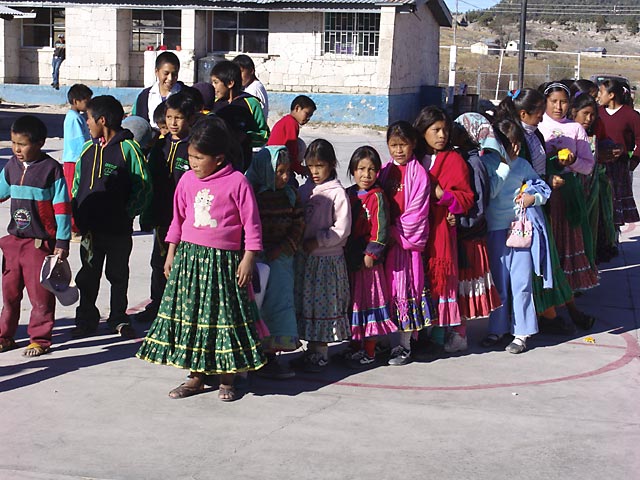
We visited a school for Tarahumara children. These primary
school children sang for us the Mexican national anthem in Spanish and in their
native language.
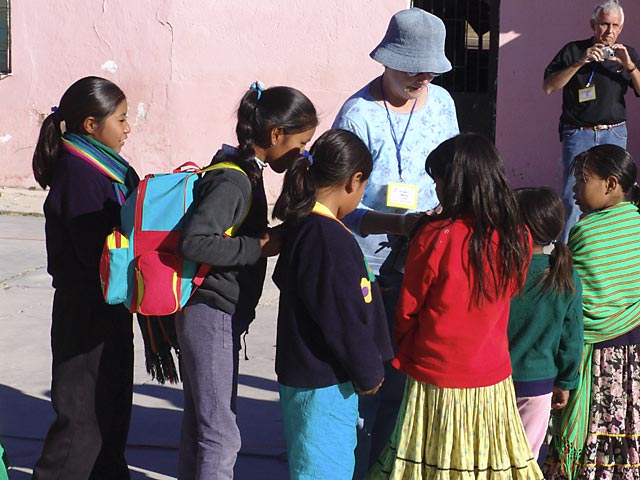
The RV caravan company had asked that we bring gifts for the
school children and suggested school supplies; they are very poor and anything
helps. Nancy is passing out pencils and pens.
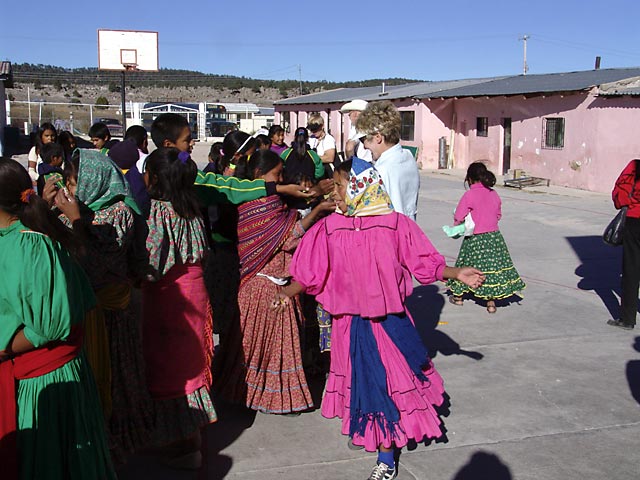
Other people also got in on the fun of playing Santa Claus.
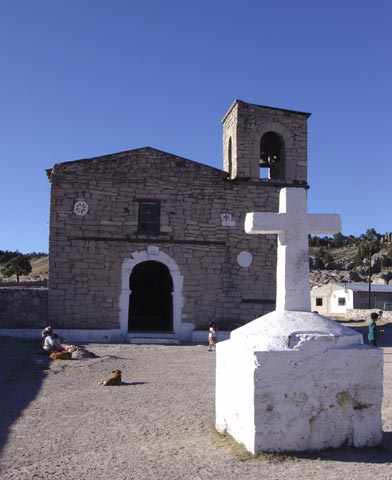
The Jesuit mission church in the Tarahumara village.
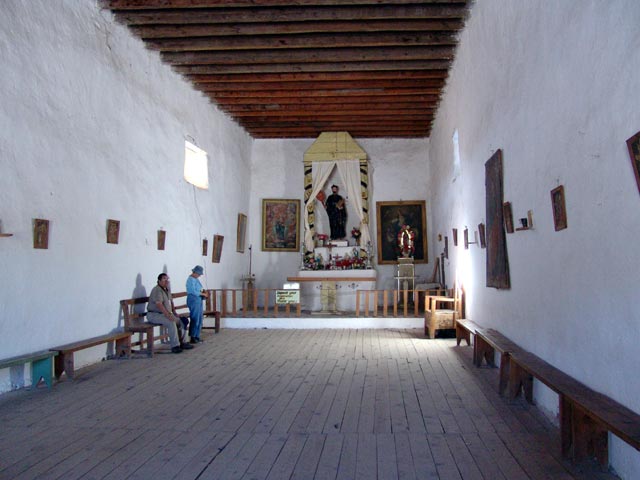
The interior of the church. We were told that a priest would
come from Creel each Sunday and offer mass and hear confessions. The attendance
at mass is about 500 people; after mass they go outside into the courtyard and
the village leader of the Tarahumara conducts a village meeting.
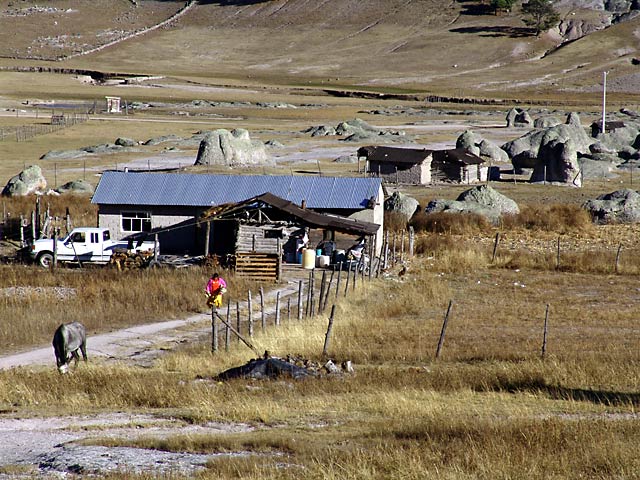
A Tarahumara home. The wife has her wares on display nearby and
comes out to sell her handicrafts as we approach.
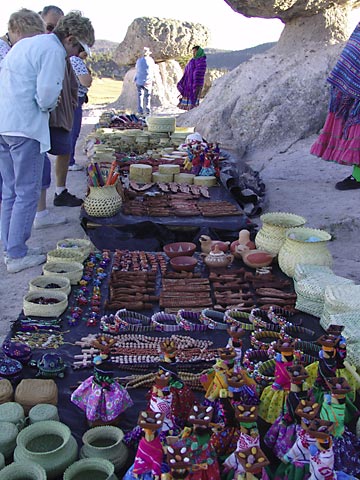
The baskets, dolls, and other Tarahumara items for sale. The Tarahumara are especially known for their basket weaving.